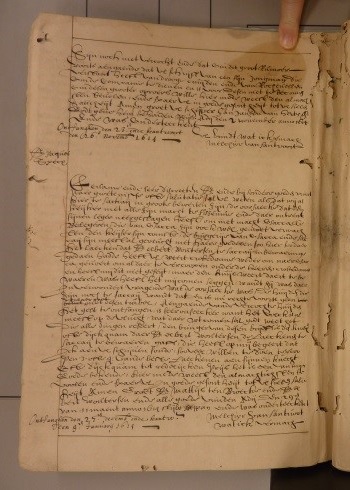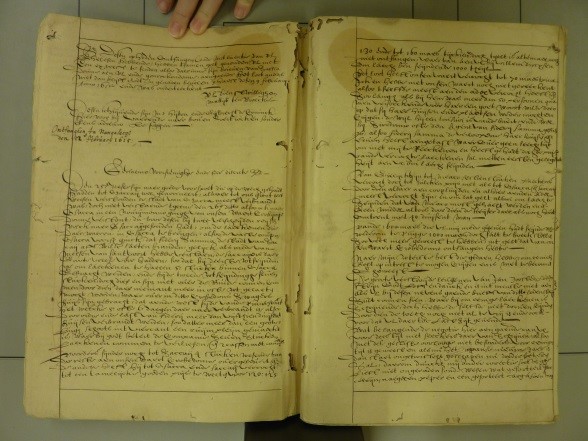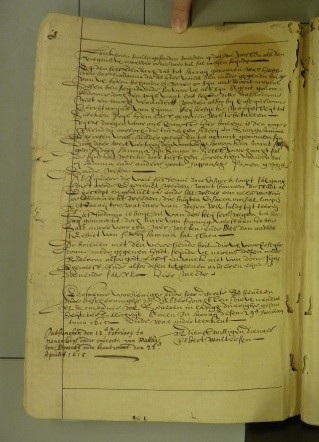No.003 - Dutch eyewitness accounts of the Siege of Osaka
Dutch eyewitness accounts of the Siege of Osaka
"You will know that we here in Sakai are in great disturbance. The reason being that the emperor [Ieyasu] has come with his full might and camped his army in Fushimi and its environs, in order to besiege Osaka with force. Those from Osaka are in good spirits, they are expecting the arrival of the emperor. Most of the citizens of Osaka and Sakai have fled with their belongings to various places". With these words the Dutch trader Melchior van Santvoort starts his letter, written in Dutch on the 29th of November 1614 (the month and the day are in Japanese calendar, December 18 in Gregorian calendar) in Sakai, during the winter campaign of the siege of Osaka.
A letter by Elbert Woutersz, a servant of the Dutch East India Company, dated January 29, 1615, describes the ruinous condition of Osaka after the winter campaign. Wouterz arrived in Sakai on the 25th and went to Osaka the next day. "By order of Hideyori, more than 15000 houses were burnt, resulting in a broad square, larger than the shooting range of a canon", Woutersz writes.
Such eyewitness accounts related to the siege of Osaka can be found in 10 letters written by Dutch traders such as Melchior van Santvoort, Elbert Woutersz and Matthijs ten Broecke. These letters were sent from Sakai, Osaka, Kyoto and Murotsu (present-day Tatsuno city) before and after the battles and transmit what the Dutch saw and heard in those respective places. In these letters the fear and panic of the citizens in those harsh times are clearly recorded. The letters provide us with a rare glimpse of what ordinary citizens experienced, contrary to most Japanese documents, which mainly give us the viewpoint of the Tokugawa bakufu.
The survey of the letters is conducted as part of a joint research project "The Hirado Project" between Nichibunken and Leiden University. For the period between 1609 and 1633 there have been 524 letters identified so far. These letters contain a wealth of information on the international relations and society of the early Edo period. The goal of this project is to publish annotated transcriptions and Japanese translations of these sources. "The Hirado project" is part of "Japan-related Documents and Artifacts Held Overseas : NIHU International Collaborative Research and Utilization".
Frederik Cryns
Associate Professor
International Research Center for Japanese Studies (NICHIBUNKEN)

Melchior van Santvoort to Jacques Specx, Sakai, November 29, 1614 (Nationaal Archief, Den Haag, Nederlandse Factorij in Japan, nummer toegang 1.04.21, inventarisnummer 276)


Elbert Woutersz to Jacques Specx, Sakai, January 29, 1615 (Nationaal Archief, Den Haag, Nederlandse Factorij in Japan, nummer toegang 1.04.21, inventarisnummer 276)
